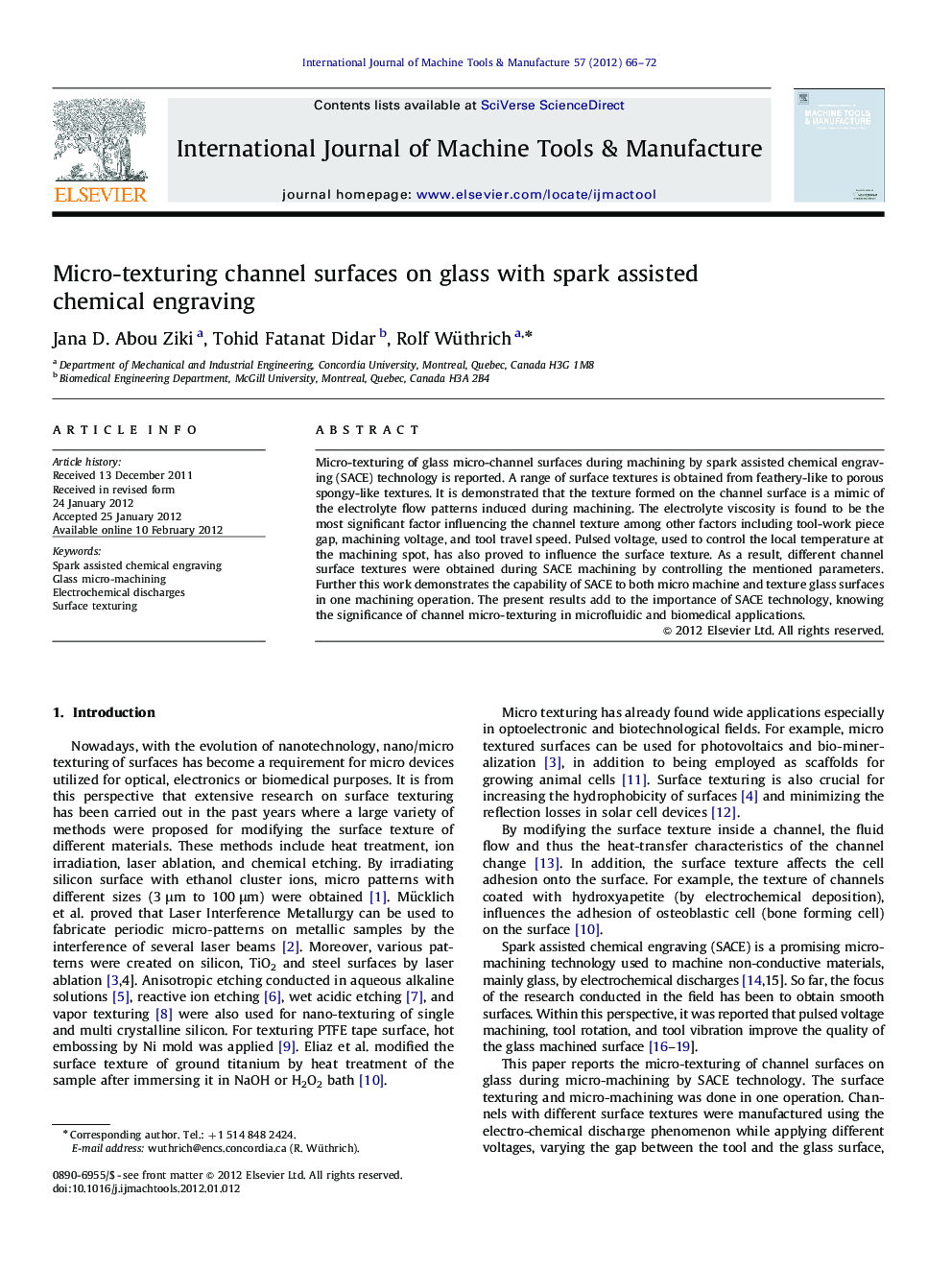| Article ID | Journal | Published Year | Pages | File Type |
|---|---|---|---|---|
| 780515 | International Journal of Machine Tools and Manufacture | 2012 | 7 Pages |
Micro-texturing of glass micro-channel surfaces during machining by spark assisted chemical engraving (SACE) technology is reported. A range of surface textures is obtained from feathery-like to porous spongy-like textures. It is demonstrated that the texture formed on the channel surface is a mimic of the electrolyte flow patterns induced during machining. The electrolyte viscosity is found to be the most significant factor influencing the channel texture among other factors including tool-work piece gap, machining voltage, and tool travel speed. Pulsed voltage, used to control the local temperature at the machining spot, has also proved to influence the surface texture. As a result, different channel surface textures were obtained during SACE machining by controlling the mentioned parameters. Further this work demonstrates the capability of SACE to both micro machine and texture glass surfaces in one machining operation. The present results add to the importance of SACE technology, knowing the significance of channel micro-texturing in microfluidic and biomedical applications.
► Glass micro-channels are machined and textured in one machining operation by SACE. ► Wide texture ranges, from very smooth to feathery-like, are obtained. ► The formed texture is a mimic of the locally induced electrolyte flow pattern. ► Electrolyte viscosity is the most significant factor influencing the channel texture.
